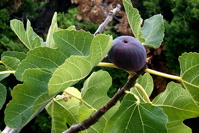I'm getting through this past week by gritting my teeth and doing what I can. It turns out that my 22-inch wide raised beds next to the patio were on the wrong side of the property line. So I had to move them. With mature plants. If you are cringing, yes, you get it.
I was able to keep the rootballs of many things intact, and move them into the big tubs that I usually use to pick up compost from the local recycling center.
My little herb garden seems okay so far, knock on wood, though the chamomile is still wilty, it had fairly deep roots. The peppers and eggplants were relatively shallow-rooted (6 - 10 inches) and seem to be doing okay so far. The tomatillos are reasonably perky, though they are starting to lose leaf color. I have some VF-11 and am going to try foliar feeding. Very intimidated, have not tried this before. I have been spraying the tomato & tomatillo plants down periodically with plain water, to try to compensate for the lost feeder roots, to keep the foliage from dying off.
The tomatoes are the hardest hit. The magnificent Aunt Ruby's German Green is still mostly wilted, though some bottom and midsection leaf recovery. The Hawaiian Pineapple has come mostly back to life, am cautiously hoping. The Santa Clara Canner is still fairly wilty, really goofed the rootball on that one. The tricolor Italian pole beans are a total loss, alas, even though I moved their rootballs and trellis section carefully.
I ordered a bunch of self-watering planters from Gardener's Supply, quite the budget-breaker, but at least they'll last for many years, and can go up on the patio. I may need to move the greenhouse, too, as there's a gas maintainance cover there. I don't want to risk having to yank everything out of the greenhouse some winter if they need to work on the gas. Mike is trying to argue that will not happen, but then I listened to him and to the property manager when the issue of the property line first came up about 6 - 8 weeks ago. They said 'no, no, don't move anything yet, you may not have to'. But if I'd moved stuff there and then, while the tomatoes were still under a couple feet tall, I wouldn't have the carnage of today.
The last planter has the bulk of my Scarlet Runner beans, going up 6 feet of trellis, the Black Cherry tomato, and the Noir de Crimee black tomato. I am going to have to face moving it today. Sometimes I think I should just rip the plants out and put them in the yard waste recycling bin and start over, but I cringe at the thought. I need to do one or the other, though-- move them again into a self-watering planter and hope they recover, or start new seedlings. We still have 60 - 90 reasonable growing days, in theory, though I don't think tomato seeds started now would get to bear before the August heat shutdown. They might still bear in the cooler September weather, though.
I may post pix later. Right now I'm too overwhelmed by it all. I shouldn't be, I suppose, as I still have my garden squares on the other side of the yard, with my paste tomatoes, my Tigerella and Green Zebra, and a couple of other things. Not like those poor folks in South Central Los Angeles, who just lost their community gardens of a generation or more. But it still majorly sucks.













